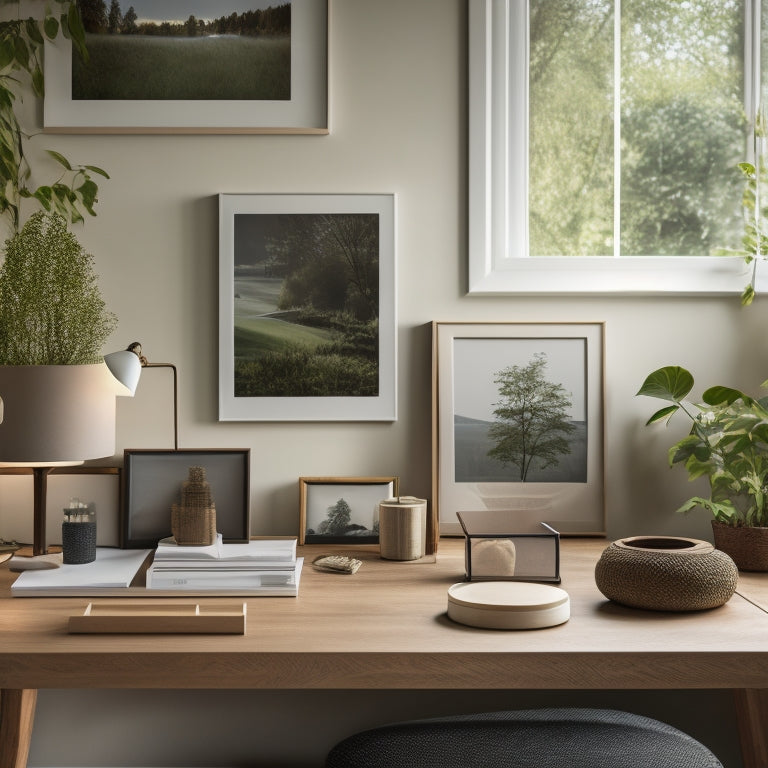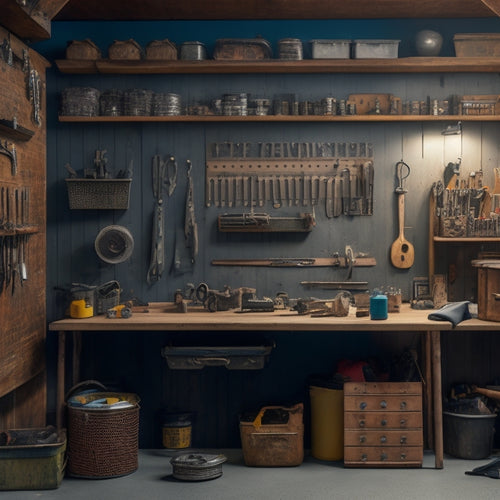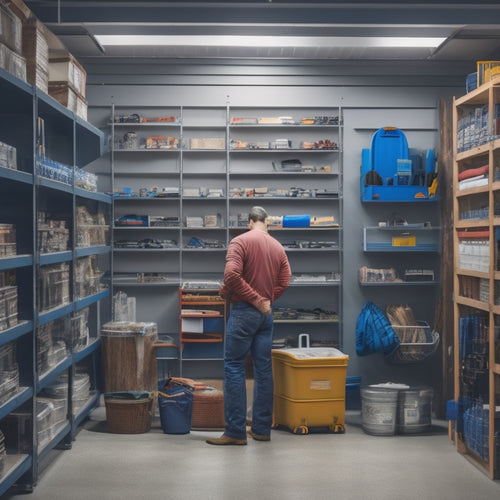
Master the Art of Organizing With These Expert Tips
Share
I've cracked the code to mastering organization by following some key principles. I start small, declutter before organizing, and utilize containers and labels to create a system that works. I prioritize functionality and accessibility, and create a cleaning routine to maintain my space. Effective storage strategies, like open-top bins and vertical solutions, help maximize my space. By labeling categories, not items, and implementing habit tracking, I stay on top of my organization. Now, I'm ready to dive deeper into the specifics of organizing different areas of my home, from kitchens to closets, and I'm excited to explore more insights that will take my organization to the next level.
Key Takeaways
• Start small to build momentum and confidence in your organizing journey, focusing on one area at a time.
• Declutter before organizing to ensure you're only storing items that bring value or serve a purpose.
• Utilize containers and labels to create a system that is both functional and visually pleasing.
• Create a cleaning routine to maintain your space and prevent clutter from building up again.
• Prioritize habit formation and consistent maintenance to ensure your organizational systems stick in the long run.
Essential Organizing Principles
When it comes to mastering the art of organizing, I've found that five essential principles serve as the foundation for any successful organizing project: starting small, decluttering before organizing, utilizing containers and labels, creating a cleaning routine, and prioritizing functionality and accessibility.
By implementing these principles, I've streamlined my time management and adopted a more minimalist living approach. I focus on one area at a time, eliminating clutter before organizing, and use containers and labels to maintain order. A daily, weekly, and monthly cleaning routine makes certain my space remains tidy.
Effective Storage Strategies
By incorporating a mix of innovative and practical storage solutions, I've been able to maximize my space and keep my belongings organized and easily accessible.
To achieve storage optimization, I utilize open-top bins and baskets for easy access, and consider pull-out drawers for stacked items. File folders and dividers help me maximize space, and vertical storage solutions like pegboards keep my walls functional.
By implementing these space-saving solutions, I've created a more efficient and organized living space.
I've also learned to prioritize functionality and accessibility in my storage solutions, ensuring that everything has a designated place and is easily retrievable. By doing so, I've reduced clutter and increased productivity, making the most of my available space.
Labeling and Categorization Tips
I've found that labeling containers and shelves is crucial for quick identification and easy access to the items I need, making my daily routines more efficient. By doing so, I'm maximizing efficiency and saving time that would be spent searching for misplaced items.
Here are some labeling and categorization tips that have worked for me:
- Labeling categories instead of individual items allows for more flexibility and adaptability
- Using a consistent labeling system throughout the space helps with quick identification
- Creating a 'home' for each item guarantees that everything has a designated place, making it easier to maintain organization
Maintaining Organization and Habits
To guarantee my organizational systems remain effective, I prioritize habit formation and consistent maintenance, recognizing that even the most thoughtfully designed systems can quickly unravel without intentional upkeep.
I adopt a maintenance mindset, acknowledging that organization is an ongoing process, not a one-time task. To stay on track, I utilize habit tracking techniques, such as daily to-do lists and weekly reviews, to make certain I'm staying committed to my systems.
Organizing Specific Spaces Successfully
When it comes to organizing specific spaces, such as kitchens, closets, and home offices, adopting a tailored approach that considers the unique challenges and requirements of each area is essential for achieving and maintaining a sense of order and functionality.
To get started, I focus on the unique needs of each space and identify areas for improvement.
-
In my kitchen revamp, I prioritize a functional layout that optimizes storage and workflow.
-
During my closet makeover, I implement space-saving solutions like slim hangers and shelf dividers to maximize storage capacity.
-
In my home office, I designate specific zones for tasks and utilize vertical wall space for storage to maintain a clutter-free environment.
Frequently Asked Questions
How Do I Stay Motivated to Maintain My Newly Organized Space?
I stay motivated by sharing my goals with a friend, making me accountable, and creating a habit tracker to monitor progress; for instance, I committed to tidying up for 10 minutes daily, and it's become second nature.
Can I Organize My Space if I Have Limited Budget or Resources?
I can definitely organize my space on a limited budget; I'll get creative with frugal hacks like repurposing old containers and repurposed decor, and prioritize multi-functional items to maximize my resources.
How Do I Involve and Get My Family Members on Board With Organizing?
Like a conductor leading an orchestra, I rally my family members by scheduling regular Family Meetings to align our Shared Goals, ensuring everyone's on the same page, working together in harmony to achieve our organizing objectives.
What Are Some Common Mistakes People Make When Trying to Get Organized?
When trying to get organized, I've learned to avoid common mistakes like Overwhelm Syndrome, where I take on too much at once, and Unrealistic Expectations, which set me up for disappointment - both of which hinder my progress.
How Do I Balance Organization With Maintaining a Sense of Coziness and Warmth?
As I aim to balance organization with coziness, I embrace Cozy Minimalism, merging Warm Simplicity with intentional decor, ensuring every item serves a purpose, and incorporating soft textures, calming colors, and inviting scents to create a harmonious space.
Related Posts
-

Design Considerations for a Custom Pegboard
When designing a custom pegboard, you'll want to start by evaluating your storage needs, considering factors like too...
-

Top Wrench Tool Box Sets for Every Mechanic
You're looking for high-quality wrench tool box sets that cater to your specific needs as a mechanic. From top-rated ...
-

Building Garage Shelves in 7 Easy Steps
You're about to convert your garage into a highly functional storage space by building custom shelves in just 7 easy ...


